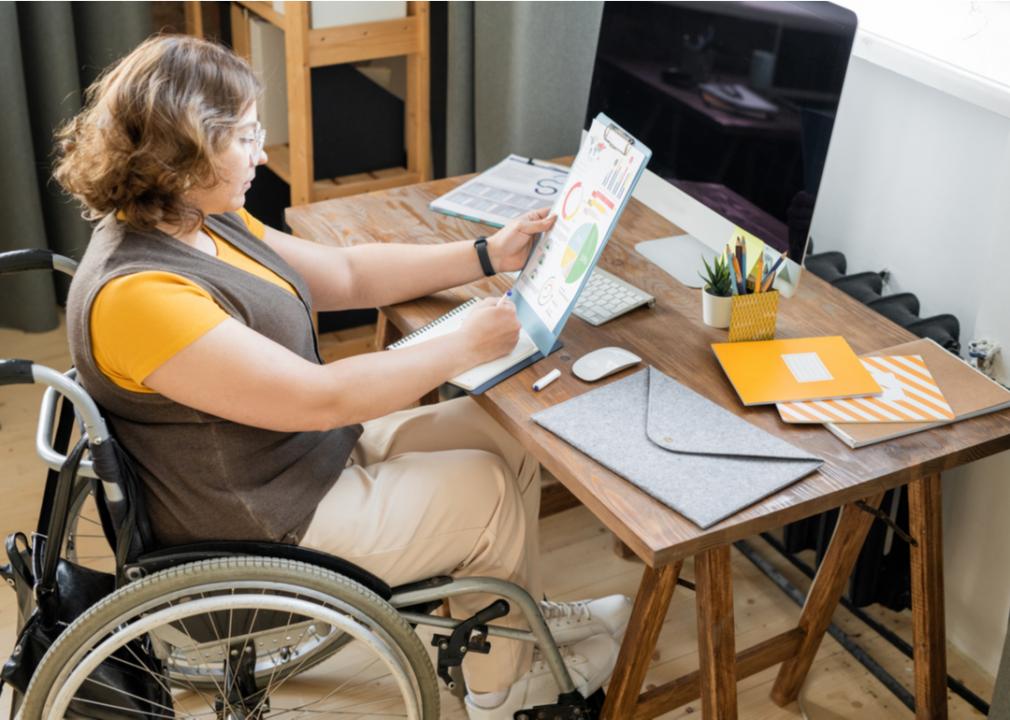From sleep to depression: How different types of chronic pain impact health

Chinnapong // Shutterstock
From sleep to depression: How different types of chronic pain impact health
While pain hurts, it is also the body’s way of telling us that something is wrong—but not all pain is created equal. Acute pain is brief, comes on suddenly, and usually has a specific cause, which, when identified and treated, disappears. Chronic pain lasts normally three months or longer, and it can stick around even after recovery. It often occurs with other chronic health conditions.
It is estimated that 1.5 billion people globally live with chronic pain and prevalence increases as people age. The leading causes of chronic pain include nerve damage, arthritis, and cancer. Chronic pain can—and often does—interfere with daily life, and can impact both mental and physical health.
Citing data from a University of Pittsburgh Medical Center study on chronic pain among over 20,000 patients, Hydragun looked at how different types of chronic pain affect other aspects of health including feelings of depression, ability to sleep soundly, and physical function.
The types of pain were classified by creating groups of pain points that were identified by study participants. While there is overlap in some of the groups of pain, the study’s authors found clinically relevant distinctions among each of the nine pain groups listed below.
Hydragun also cited health measures developed by Northwestern University’s Patient-Reported Outcomes Measurement Information System (PROMIS), which offer context on what the study’s various health measures mean for patients. Data on overall mental and physical health are included to offer a picture of the patient’s general health in that category.
The original University of Pittsburgh Medical Center study calculated the mean T-scores, a scientific method for measuring the severity of different functions and symptoms based on a baseline comparison to the general population.
Depending on the health metric, a score above or below 50 represents increased severity compared to the rest of the population. For example, a high T-score for sleep disruption means someone faces more difficulties falling asleep than the average person. A lower T-score on physical function means someone struggles with daily activities more than the average person.
![]()

Paul Vasarhelyi // Shutterstock
All types of chronic pain
– Physical function: 35.3 (moderate)
– Pain interference: 66.4 (moderate)
– Sleep disturbance: 59.7 (mild)
– Anxiety: 56.3 (mild)
– Depression: 55.2 (mild)
– Overall physical health: 35.6 (fair)
– Overall mental health: 43.4 (good)
According to data from the National Health Interview Survey, 50.2 million or 20.5% of adults in the U.S. alone experience chronic pain. Not only does this impact physical and mental health, but those suffering from chronic pain miss more work than those who don’t (10.3 days versus 2.8 days), and the value of lost productivity thanks to chronic pain is close to $300 billion annually.
Several chronic conditions such as cluster headaches, arthritis, fibromyalgia, endometriosis, sickle cell disease, and migraine headaches show chronic pain as a major symptom. Chronic pain can include aching, burning, throbbing, stiffness, shooting, and squeezing, and can have a major impact on a person’s daily functioning. Among the other conditions and symptoms that may arise in individuals suffering from chronic pain include anxiety, fatigue, insomnia, depression, and mood swings.

Pressmaster // Shutterstock
Neck and shoulder pain
– Physical function: 39.0 (moderate)
– Pain interference: 65.1 (moderate)
– Sleep disturbance: 59.6 (mild)
– Anxiety: 56.7 (mild)
– Depression: 54.9 (within normal limits)
– Overall physical health: 37.5 (fair)
– Overall mental health: 43.4 (good)
It is quite common for neck and shoulder pain to simultaneously occur. This type of chronic pain can be due to soft tissue injuries, rotator cuff tears, bursitis, cervical spondylosis, whiplash, frozen shoulder, tension headaches, and a herniated disk. Chronic neck and shoulder pain can also indicate a serious condition like coronary artery disease. Clinical recommendations for pain management may include physical therapy, stretching and exercise, pain medication, steroid injections, and heat or ice. Specific conditions, like cervical spondylosis, may benefit from a specific treatment, such as wearing a cervical collar.

AA.Shkob // Shutterstock
Neck, shoulder, and low back pain
– Physical function: 35.3 (moderate)
– Pain interference: 66.4 (moderate)
– Sleep disturbance: 61.0 (moderate)
– Anxiety: 57.3 (mild)
– Depression: 56.1 (mild)
– Overall physical health: 35.1 (fair)
– Overall mental health: 41.7 (good)
Those who struggle with chronic neck, shoulder, and lower back pain seem to show more intense sleep disturbance than those who deal with other types of chronic neck and back pain. There are several ways to mitigate this type of pain when it comes to dealing with sleep, among them include sleep positioning and using additional support by placing a pillow between the knees or under the pelvis to offer relief. Sleeping with a small pillow under the sore shoulder or with a towel under the small of the back is another way to provide more support to painful areas. It is also essential to maintain proper sleep hygiene and to sleep on a medium-firm or firm mattress.

pixelheadphoto digitalskillet // Shutterstock
Upper and lower back pain
– Physical function: 35.3 (moderate)
– Pain interference: 66.2 (moderate)
– Sleep disturbance: 59.1 (mild)
– Anxiety: 55.5 (mild)
– Depression: 54.7 (within normal limits)
– Overall physical health: 36.1 (fair)
– Overall mental health: 43.9 (good)
In many cases, chronic back pain is age-related, though it can also be from a past injury. Common causes of chronic upper and lower back pain can include years of poor posture, compression fractures, arthritis, degenerative disc disease, and a herniated disc. Poor workspace design and sedentary lifestyles also have a significant impact on overall back health. Several factors can increase the risk for back pain such as genetics, fitness level, and weight. Smoking can also have a significant impact on the back because it can restrict oxygen and blood flow to discs, which causes faster disc degeneration.

chalermphon_tiam // Shutterstock
Abdominal pain
– Physical function: 37.1 (moderate)
– Pain interference: 65.9 (moderate)
– Sleep disturbance: 59.4 (mild)
– Anxiety: 56.4 (mild)
– Depression: 55.2 (mild)
– Overall physical health: 36.3 (fair)
– Overall mental health: 42.9 (good)
Chronic abdominal pain (CAP) is a common complaint and is described as pain in the abdomen lasting for longer than three months. CAP affects approximately 2% of adults and more women than men experience this type of pain. There can be several causes for this type of pain including constipation, lactose intolerance, peptic ulcers, menopause, and certain types of cancer including ovarian and cervical cancer, as well as irritable bowel syndrome. The most common symptoms of chronic abdominal pain can vary for individuals and include dull or sharp pain, which can last for minutes or hours; pain that may or may not happen when eating and can occur at any time; and pain that can occur with headaches or vomiting, though more severe symptoms like blood in the stool or weight loss require evaluation by a doctor.
Treatment options depend on the condition causing the abdominal pain. Among the possible treatments include medications to reduce stress and anxiety, biofeedback, hypnosis, relaxation techniques, pain medications, changes to a diet, including the addition of or an increase in fiber-rich foods or a supplement, or the elimination of certain types of food, such as dairy, for those whose pain is caused by lactose intolerance.

fizkes // Shutterstock
Axial low back pain
– Physical function: 37.2 (moderate)
– Pain interference: 64.0 (moderate)
– Sleep disturbance: 55.6 (mild)
– Anxiety: 52.4 (within normal limits)
– Depression: 50.9 (within normal limits)
– Overall physical health: 38.6 (fair)
– Overall mental health: 47.3 (good)
Axial pain is described as pain confined to one spot or region. Figuring out the exact cause of axial low back pain can be challenging because it is caused by a number of things, including facet joint problems, soft tissue damage, or a degenerated disc. The most common type of axial back pain, mechanical pain, gets worse with certain activities and positions.
There are several ways to treat this type of chronic pain including brief periods of rest, stretching, and exercise that can include physical therapy, ice or heat application, or pain medications like acetaminophen or ibuprofen. According to a review of several studies looking at the overall prevalence of chronic low back pain concerning gender and age, “Chronic low back pain prevalence increases linearly from the third decade of life on, until the 60 years of age, being more prevalent in women.”

shurkin_son // Shutterstock
Lower back pain radiating to the thigh
– Physical function: 35.6 (moderate)
– Pain interference: 65.3 (moderate)
– Sleep disturbance: 57.1 (mild)
– Anxiety: 54.0 (within normal limits)
– Depression: 53.3 (within normal limits)
– Overall physical health: 36.8 (fair)
– Overall mental health: 45.3 (good)
Normally, lower back pain that travels down the front of the thigh or back but does not spread to the knee is due to a pinched nerve. Possible causes of a pinched nerve include an arthritic facet joint, a herniated or bulging disc, or bony material that is overgrown, like a bone spur. A pinched nerve can also lead to permanent nerve damage. Among the preventative measures that can be key for a pinched nerve include maintaining correct posture, exercising safely and stretching, not sitting or standing for too long, and taking breaks from tasks that require repetitive motion.
Another cause of this type of chronic pain may be the presence of chronic illnesses like fibromyalgia and arthritis. Treatment recommendations are similar to those of other chronic pain conditions impacting the lower half of the body and include gentle stretching, massages, physical therapy, nonsteroidal anti-inflammatory drugs for pain relief, and corticosteroid injections, which reduce swelling and inflammation around the pinched nerve.

Mladen Mitrinovic // Shutterstock
Lower back pain radiating below the knee
– Physical function: 34.4 (moderate)
– Pain interference: 66.5 (moderate)
– Sleep disturbance: 59.2 (mild)
– Anxiety: 55.6 (mild)
– Depression: 54.7 (within normal limits)
– Overall physical health: 35.8 (fair)
– Overall mental health: 44.6 (good)
The most common condition presenting with chronic lower back pain radiating below the knee is sciatica, which begins in the lower back as a shooting pain and spreads to the buttocks and down the back of one leg. This pain is frequently caused by pressure on the sciatic nerve, which may be from a bone spur, herniated disc, trauma, stenosis, or muscle strain. Nerve damage, arthritis, and tissue scarring may also be contributing factors.
Sacroiliac joint dysfunction can cause this type of chronic pain, which can be treated with rest, physical therapy, injections, and in more extreme cases, surgery. Radiating lower back pain, particularly with pain radiating below the knee, has a less favorable prognosis than non-radiating lower back pain.

Syda Productions // Shutterstock
Widespread pain, light
– Physical function: 35.3 (moderate)
– Pain interference: 67.0 (moderate)
– Sleep disturbance: 61.7 (moderate)
– Anxiety: 57.9 (mild)
– Depression: 56.6 (mild)
– Overall physical health: 34.7 (poor)
– Overall mental health: 42.0 (good)
Chronic widespread pain can co-occur with several conditions, including headache, irritable bowel syndrome, chronic fatigue syndrome, joint pain, and psychiatric disorders. It is also a major symptom of fibromyalgia and one of the symptoms used in the diagnosis of the condition. According to a 2016 study on the prevalence of chronic widespread pain, which is a long-lasting pain in multiple areas of the body, its prevalence lies at 10% within the general population. It is commonly associated with symptoms like concentration problems, fatigue, and psychological distress.
Clinical recommendations for the treatment of chronic widespread pain include a combination of psychological, pharmacological, and physical treatments like cognitive behavioral therapy, pain medications, exercise, and physical therapy.

Khetsophon Thong-in // Shutterstock
Widespread pain, heavy
– Physical function: 32.5 (moderate)
– Pain interference: 69.3 (moderate)
– Sleep disturbance: 64.0 (moderate)
– Anxiety: 60.8 (moderate)
– Depression: 60.1 (moderate)
– Overall physical health: 31.2 (poor)
– Overall mental health: 38.3 (fair)
Heavy or high-impact chronic pain is an intense form of chronic pain that impacts 4.8% of the adult population in the United States. Those affected by this type of pain have difficulty with normal daily tasks and functions and approximately 83% of those suffering from high-impact chronic pain cannot hold down jobs. In about a third of these cases, the pain is so intense that self-care activities like washing and getting dressed become extremely difficult.
Age, ethnicity, education level, and marital status are important factors in determining the likelihood of suffering from this type of pain. Individuals with high impact chronic pain have higher levels of depression and anxiety and poorer overall mental and physical health outcomes globally than those living with regular chronic pain.
Overall, this study shows that the impact of chronic pain can diverge significantly depending on type. For instance, neck and shoulder pain caused the least physical impact of all the groups, but caused significant anxiety; while lower back pain (radiating below the knee) caused the most severe problems with physical functioning but had far less mental health impact. These results could be useful in determining highly personalized treatment for chronic pain sufferers.
While chronic pain can be overwhelming, there are solutions to help manage it. Reducing stress with the help of meditation and relaxation-based exercises like gentle yoga and tai chi can be helpful. Mindfulness and positive thinking can also go a long way toward managing chronic pain, especially when paired with physical therapy and massages. Staying active, getting an adequate amount of sleep, and remaining connected to others are also invaluable and effective tools for dealing with chronic pain. Managing co-occurring conditions like depression and anxiety helps people gain control over their pain, and there are many therapeutic options that can ease chronic pain as well, including biofeedback, hypnosis, and cognitive-behavioral therapy (CBT).
This story originally appeared on Hydragun
and was produced and distributed in partnership with Stacker Studio.



